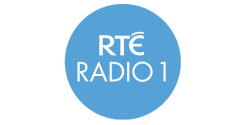I’m still playing catch up with a queue of interesting radio stories I’ve yet to post. Although this news dates from May, it didn’t get much play on this side of the Atlantic, and should be of interest to Radio Survivors.
Ireland’s longstanding – and oft-threatened – longwave radio station RTÉ 1 on 252 kHz is staying on the air. With the ability to serve listeners over a longer distance than AM (mediumwave), though covering less area than shortwave, listeners in the Irish diaspora across the UK have relied upon this station to keep in touch with news and culture back home.
However, the cost of maintaining aging equipment and the availability of RTÉ 1 on the internet caused the state broadcaster to plan its shutdown five years ago. That’s when the station first appeared on my radar. Immediately listeners across Ireland and the UK registered their protests, noting that many older people who rely upon the broadcasts aren’t able to use internet radio easily, and that in-car listening isn’t so easily replaced by the internet, either.
In 2016 the RTÉ put the closure on hold. It was finally cancelled this May, when the broadcaster announced that it would perform necessary repairs and maintenance in order to keep the 252 signal on air for at least another two years. That will require a two month interruption in service.
As a contingency, RTÉ has explored simulcasts on digital DAB+ radio in the UK, but regulations that require broadcasters to be UK-based have been a stumbling block.
Longwave radio, which sits below the AM band between 148 and 283 kHz, was never implemented as a broadcast service in North America. It primarily travels via groundwaves for distances up to about 1200 miles, whereas shortwave travels by skywaves for even longer distances. Longwave’s advantages are that it has fidelity and reliability that are more like AM radio, while covering a larger area.
Though longwave has been in service about as long as AM mediumwave, RTÉ 252 has only been going since 1989. As contributor Paul Bailey explained, the broadcaster acquired the operation from Radio Luxembourg as its rock music programming was losing ground to native stations in the UK.
30 years is still a decent tenure, and the decision to keep the 252 signal going is a testament to the power of radio, and the notion that obsolescence is in the ear of the beholder. The point of radio is to reach listeners, and if the new technology won’t reach those who benefit most, then is it really better?



